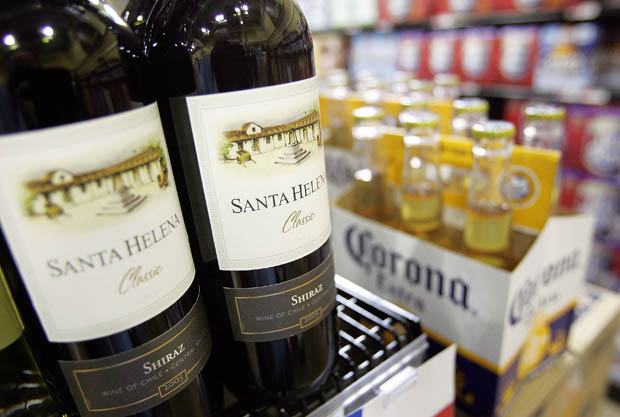There are plenty of visitors to Whistler’s beautiful ski hills. And those visitors are thirsty.

According to statistics from the B.C. Liquor Distribution Branch, 3.7 million litres of liquor was sold from BC Liquor Stores in the Squamish-Lillooet Regional District during the 2011-12 fiscal year.
INTERACTIVE: Map of B.C. liquor purchases by region
This might not sound like much compared to the Greater Vancouver Regional District’s 61.9 million litres, but when adjusted for the number of adults of eligible drinking age, Squamish-Lillooet sells more liquor than anywhere else in the province – enough for every resident adult over 19 to have 120 litres of alcohol per year on average.
But it’s unlikely that residents are drinking that much by themselves.
“The Squamish-Lillooet Regional District is home to a popular international tourist destination – Whistler Blackcomb,” wrote a spokesperson for the B.C. Liquor Distribution Branch in an email. The official population figures don’t take into account the number of tourists who visit. “As a result, the per capita beverage alcohol sales figures appear to be higher as they do not take temporary population figures into account.”
For example, Whistler’s modest 2010 population of 10,531 swelled to over 28,000 when out-of-town visitors and seasonal workers were accounted for, according to statistics from Whistler2020, an organization managed by the Resort Municipality of Whistler. This huge daily influx of visitors helps to skew the per-capita average.
But British Columbians in general are a thirsty bunch. An average resident of drinking age spends about $330 a year at BC Liquor Stores, to purchase about 37 litres of alcoholic beverages.
Most of that is beer, which accounts for about 23 litres of total consumption. Wine is second-most popular, at about 9 litres per person annually. The balance is made up by spirits and “refreshment beverages” such as pre-mixed drinks, coolers and ciders.
A drink’s popularity varies somewhat by region, though.
Refreshment beverages, for example, are most popular along the northern part of Vancouver Island. Sales in the Mount Waddington Regional District amount to 12.3 litres per person, much higher than the provincial average. The B.C. Liquor Distribution Branch isn’t sure why.
And at first glance, people from the Okanagan Valley, known for its wineries, don’t seem to be drinking as much wine as other areas. More wine is sold per capita in the Squamish-Lillooet, Sunshine Coast and the Mount Waddington regional districts. The Okanagan is nearly tied with Victoria in wine sales, at 9.9 litres per person in the Central Okanagan regional district.
But they might just not be shopping at B.C. Liquor.
“A significant amount of wine purchased in the Okanagan Regional District is purchased directly from the wineries,” wrote the B.C. Liquor Distribution Branch.
This data doesn’t show the whole picture, however. There are many private liquor stores in B.C., which account for 42.5 per cent of all liquor sold in the province – actually higher than the dollar amount of liquor sold by government stores (41 per cent). The numbers released by B.C. Liquor only reflect sales from official B.C. Liquor stores.
Use the map below to explore B.C.’s liquor purchases per capita. Use the drop-down menu on the right to switch between types of alcohol.




Comments